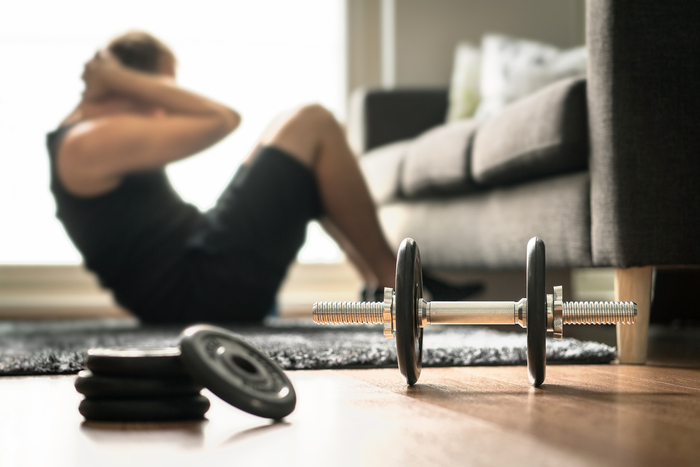In the 2016 Rio Olympics, Michael Phelps’ appearance at the U.S. men’s 4×100 freestyle relay event with dark red cupping marks caught people’s attention and sparked curiosity. It was later revealed that the U.S. athlete team had been using cupping, a Traditional Chinese treatment (TCM) modality for sports recovery[1]. Cupping is well-known for its ability to relieve muscle tension and improve blood circulation, and its therapeutic benefits have gained public recognition. Dwayne Johnson, the famous American actor and retired professional wrestler, also attests to the benefits of TCM in sports recovery by incorporating acupuncture into his regimen to recuperate from past injuries[2]. This spotlight on TCM has positioned it as a recognised and effective sports recovery technique globally.
Sports recovery is an important aspect of an athlete’s performance and long-term well-being. It encompasses physiological and psychological processes essential for restoring the body and mind to an optimal state post-intense physical activity. These processes aid tissue repair, relieve muscle inflammation, replenish energy reserves, and ultimately assist in performance enhancement and injury prevention. A comprehensive and holistic recovery approach should also prioritise the mental well-being of athletes, acknowledging that poor mental health could exacerbate physiological responses to exercise and hinder recovery[3]. Integrating techniques to address mental health challenges is important in fostering resilience and determination for athletes, supporting their journey amid rigorous training and inevitable setbacks.
Understanding sports recovery from a TCM perspective
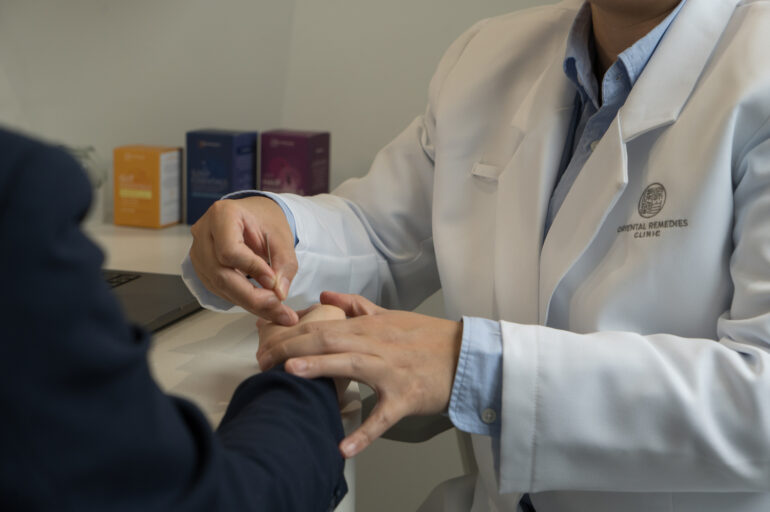
Muscle aches and joint pain are common discomforts post-workout or training. It normally starts a day or two after a workout, where pain is felt when stretching the muscles and is accompanied by a reduced range of motion. Commonly known as a Delayed Onset Muscle Soreness (DOMS), this often results from micro-injuries caused by overstraining the body, involving micro-fracturing of bones and micro-tearing of muscles and tendons[4]. With proper stretching exercises and rest, the body typically overcomes and adapts to be stronger within a week. However, if one doesn’t allow adequate time for the body to heal and continues intense training, these micro-injuries can progress, potentially leading to an overuse injury[4]. Such injuries occur when tissue is damaged due to repetitive demand over time, commonly observed in athletes who engage in one sport year-round or gym-goers who excessively train specific muscle groups.
TCM views muscle aches and joint pain as a result of poor blood circulation to the affected area, which could be due to:
i) Deficiency in Qi (气血虚弱)
In TCM, Qi is an energy in the body that provides warmth, drives circulation and strengthens immunity. The Spleen’s Qi is particularly crucial for gut health, aiding digestion, and transforming nutrients into Qi and Blood for the body to function optimally. The Spleen also governs muscles throughout the body, empowering muscle performance. However, factors like excessive consumption of cold drinks and poor eating habits (e.g. eating too fast, skipping meals, late-night full meals) can weaken Spleen Qi, compromising its functions. Poor Spleen function then results in weaker muscles and joints and contributes to muscle and joint pain due to the reduced blood supply at the affected area post-workout (不荣则痛), hindering recovery and potentially causing further injury.
ii) Stagnancy of Qi and Blood circulation (气滞血瘀)
Good circulation of Qi and Blood is vital for post-exercise comfort, aiding in the repair of strained muscles and tendons while reducing inflammation from micro-injuries. Liver Qi stagnation, often a consequence of poor mental wellness (e.g. anxiety or stress) and unhealthy sleep habits (e.g. late nights or poor sleep quality), can affect Qi and Blood circulation. Overstraining the body, resulting in multiple micro-injuries, induces inflammation or blood stasis (血瘀), further obstructing circulation. Additionally, frequent cold showers and excessive consumption of cold foods contribute to stagnancy in Qi and Blood circulation. When the blood circulation is impaired, blood does not flow smoothly to the muscles and joints, thereby leading to pain (不通则痛).
Other less commonly talked about issues, that athletes and gym-goers most likely face are fatigue and mental stress. When not managed, these factors can hinder sports recovery as a whole. Fatigue is usually associated with a deficiency of Qi in the body when athletes train excessively and do not get proper rest. Lack of rest also affects Heart health, it weakens the heart and slows down blood circulation to the brain. This will then make it hard for the athletes to focus and stay alert. Liver Qi stagnation and mental stress form a vicious cycle, where stagnated Qi in the Liver could reduce one’s adaptability towards stress, while stress build-up or other mental woes could further worsen the stagnation in Liver. Chronic stress and fatigue would ultimately affect the Qi circulation and compromise its ability for immunity, which causes athletes to fall sick more easily.
Supporting Sports Recovery with TCM and Tech-Enhanced Therapies
1) TCM treatments
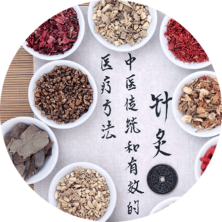
Herbal medications help support sports recovery by[5]:
-
- Improve peripheral circulation for muscle and joint recovery
- Curb inflammation by expediting absorption of inflammatory mediators
- Reduce pain and swelling
- Relieve tension in muscles and tendons
- Correct imbalances in the body to prevent and reduce injury
- Help with insomnia and stress to support mental wellness and expedite recovery
- Strengthen immunity and replenish energy
To boost sports recovery, herbs that can promote blood circulation, clear heat and dampness, as well as herbs with Qi nourishing and invigorating properties[6] are typically prescribed. Some examples of herbs used are: 红花 Hong Hua (Safflower),三七 San Qi (Panax notoginseng),乳香 Ru Xiang (Frankincense),没药 Mo Yao (Myrrh),独活 Du Huo (Angelica pubescens),葛根 Ge Gen (Puerariae radix), 人参 Ren Shen (Panax ginseng),黄芪 Huang Qi (Astragalus root),紅景天 Hong Jing Tian (Rhodiola rosea)[7]. These herbs are usually administered orally or used as an external bandage or wash.
ii) Acupuncture
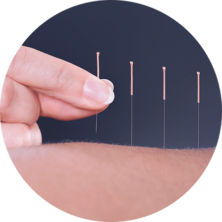
Acupuncture is an efficient and inexpensive technique recommended by the American Pain Society, the National Institutes of Health, and the World Health Organization for relieving pain, emesis, respiratory disease, and central nervous system disorders[8][9][10]. From a TCM standpoint, this TCM modality helps to stimulate Qi and Blood flow to relieve stagnation caused by stasis or inflammation.
Acupuncture can support sports recovery by:
-
- Enhancing blood circulation and oxygenation to the muscles and joints
- Preventing muscle cramps and helping in pain relief
- Tonifying the body to boost stamina and improve endurance
- Conditioning the internal body imbalances to reduce athletes’ downtime
- Calming the mind and easing stress for better sports recovery and performance[11]
iii) Cupping
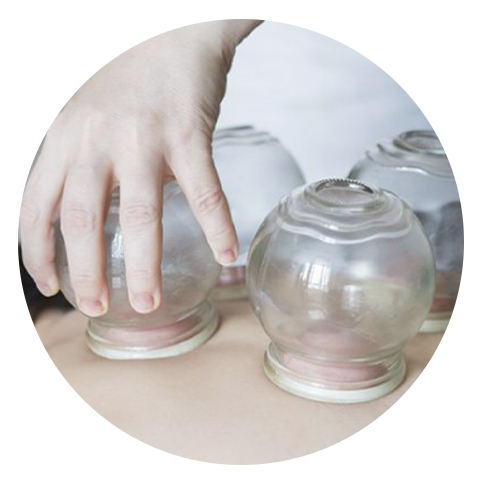
Cupping therapy is done by putting heated glass cups on the skin surface to create suction on different muscle groups. This helps to induce blood flow to the treated area, bringing oxygen and immune cells to promote healing[12]. Cupping could support recovery from sports injury by:
-
- Relieving muscle tension and joint stiffness
- Reducing muscle aches and soreness
- Drawing out inflammation or dampness that causes pain
- Improving lymphatic flow for better drainage of toxins[13]
iv) Guasha
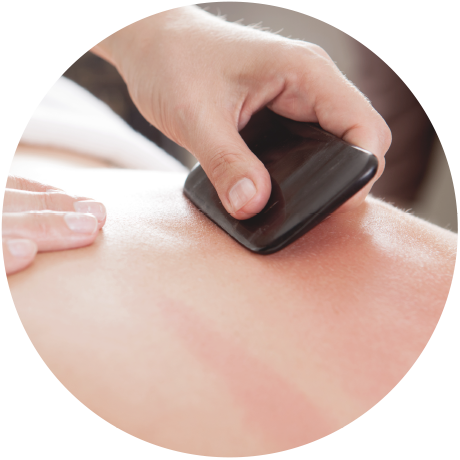
Guasha or scraping involves applying strokes in a fluid motion along the meridians or affected muscle groups, usually performed at the neck, upper back and shoulder areas. Similar to cupping marks, guasha might leave mild bruising on the skin that can vary from light pink to red and even purple, depending on the inflammation and stagnation at the affected area[14]. It usually takes about a week for both cupping and guasha marks to be gone, except for individuals with very poor blood circulation – might take up to two weeks.
Main benefits of guasha in sports recovery:
-
- Reduces muscle knots and improves blood flow
- Alleviates tight muscles and enhances flexibility
- Pain relief for muscle aches and soreness
- Facilitates toxins and inflammation drainage through improved lymphatic flow
2) Tech-enhanced Therapies
i) Electro-Lymphatic Therapy (ELT)
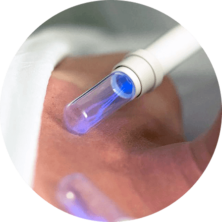
Athletes and gym-goers who train consistently are subjecting themselves to constant inflammation from the straining muscles and tendons. It is essential to ensure that there is effective lymphatic drainage to flush out the lactic acid and inflammation in the muscles produced post-workout. At Oriental Remedies Clinic, we provide Electro-Lymphatic Therapy (ELT) which is 8-10x more effective than what manual lymphatic massage (MLD)* can offer, encouraging better lymphatic drainage for individuals with chronic and elevated inflammation.
*Clinical observations over the last 15 years from ~1000 practitioners, summarized by Dr. Jennifer, manufacturer of XP-II device.
ELT enhances lymphatic circulation and drainage to support sports recovery:
-
- Reduce inflammation that causes pain and soreness
- Facilitate injury recovery
- Improve postexercise regeneration of muscles to reduce risk of injury and optimise training effects[15]
- Enhance immunity and reduce downtime for athletes and active gym-goers[16]
- Better organ functions for overall health and stamina[17]
ii) Cell Pro Therapy
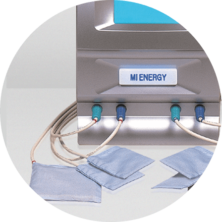
Sports recovery with a holistic approach focuses on the psychological aspects of recovery besides physiological rehabilitation. Studies have shown that there is a strong correlation between physical injury and mental wellness, especially unique in the athletic population[18]. For instance, athletes who suffer from sports injuries and were taken out of their sport while recuperating could develop significant mental issues like anxiety, depression and eating disorders. Mental distress, on the other hand, might also complicate the healing process, particularly when an injury is extensive or requires surgery[19].
Cell Pro Therapy is a treatment that provides the best of both worlds, benefitting both psychological and physiological recovery. Abundance of reducing electrons are introduced through skin contact during this therapy. Reducing electrons is known to function like antioxidants that neutralise oxidative stress caused by exhausting exercises and overtraining[20], enhancing sports performance in athletes.
Reducing electrons in CPT helps to enhance sports recovery by:
-
- Neutralising free radicals which cause oxidative stress to our body cells, assisting in better cellular metabolism[21]
- Strengthening body’s self-defence power and immunity[22]
- Decreases diastolic blood pressure to support sports recovery and endurance[23]
- Balancing the autonomic nervous system (ANS), assisting in regulation of sleep and mental wellness[23]
iii) Far-Infrared Therapy (FIR)
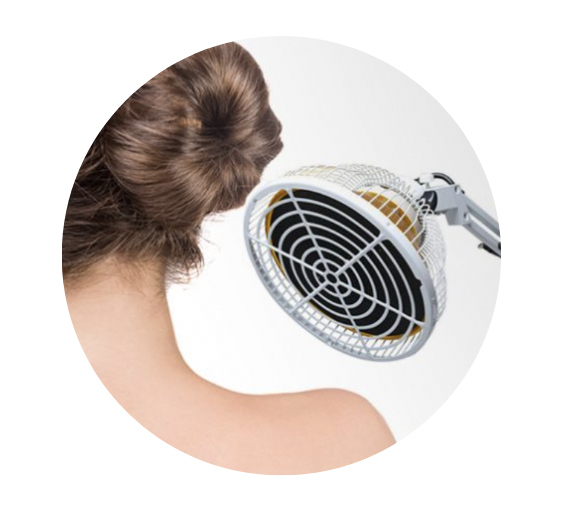
Far-infrared therapy is a heat therapy that can penetrate past the skin and our insulation fatty layer to the muscles and bones without excessive heating. FIR therapy can greatly benefit athletes in both the physical and mental aspects of wellness.
Perks of incorporating FIR in sports recovery routine[24]:
-
- Promotes the body’s natural healing processes by enhancing blood circulation
- Relieves muscle aches and joint pain, as well as reducing muscle spasms
- Activates the parasympathetic nervous system (relax mechanism) to ease body tension and mental stress
TCM lifestyle tips and dietary advice
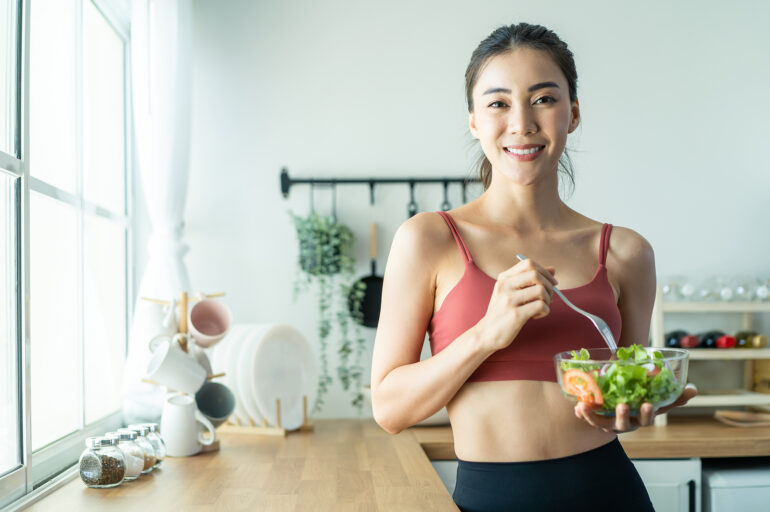
1. Avoid overtraining and ensure you get sufficient rest and sleep
A carefully curated and properly paced training would allow the body to have enough time for recovery and repair. Good sleep quality can further enhance the healing process and reduce pain[25].
2. Adopt heat therapies in the recovery routine regularly
It can be any form of heat therapy you prefer, including saunas, infrared saunas, hot baths, hot springs, and even hot yoga. This will help to relieve muscle aches, ease body tension, reduce stress and improve sleep. Heat therapy can also increase the secretion of endorphins in the body which are natural pain relievers and mood boosters[26].
3. Taking supplements and foods that support joint and muscle health
Consume supplements or foods rich in iron, magnesium and calcium to support muscle and nerve function, as well as improve bone density. Consider taking the Triple Action Joint Relief which is formulated by our certified TCM physicians, using a unique blend of calcium, collagen, glucosamine and TCM herbal extracts to ease joint discomfort, promote joint flexibility and maintain bone strength.
4. Abstain from excessive consumption of cold drinks or cooling foods
Reduce consumption of cold drinks and cooling foods aids in promoting gut health for better digestion and nutrient absorption. Aside from enhancing health and immunity, it also helps to protect the Spleen Qi from a TCM standpoint, enhancing Qi and Blood production for faster injury recovery. Minimising coldness in the body could improve overall blood circulation and facilitate toxins/inflammation drainage to promote sports performance and endurance.
Your healing is the most important!
Sports recovery with TCM offers a holistic approach to wellness, addressing underlying body constitution for improved recovery and injury prevention. Personalised treatment plans, crafted through consultation with certified TCM physicians, target immediate concerns like muscle aches and joint stiffness, minimising downtime and enhancing performance. Incorporating tech-enhanced therapies complements traditional TCM treatments, providing longer-lasting effects and better results. Beyond athletes, TCM supports sports recovery for gym-goers and those with active lifestyles, aiding in muscle relief, injury recovery, and endurance enhancement.
If you are looking to explore a holistic approach to sports recovery, consult our physicians at +65 8087 0486 for a targeted treatment plan.
—
This article is written by Physician Jesslyn Poh.
Physician Jesslyn Poh (Oriental Remedies Group, Singapore), a registered TCM physician certified by the Traditional Chinese Medicine Practitioners Board (TCMPB).
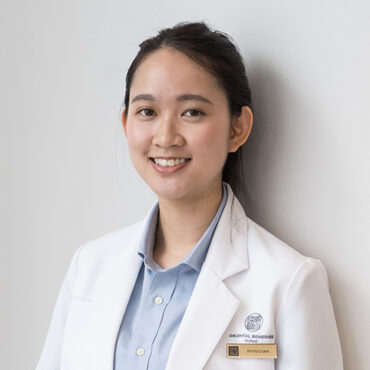
Note: All words in Italics refer to the TCM organ system and not the anatomical organ referenced in western medicine.
Disclaimer:
The content on this page is for information and educational purposes only. Such medical information may relate to disease, injury, drugs and other treatments, medical devices and/or health products. Medical information does not amount to advice, and if advice is needed an appropriate professional help should be sought. The disclaimer asserts that no warranties or representations are given in respect of the medical information, and that the website operator should not be held liable if a user suffers any injury or loss after relying upon the medical information.
Any devices used for technology-enhanced therapies are intended for use only for general well-being purposes or to encourage or maintain a healthy lifestyle, and is not intended to be used for any medical purpose (such as the detection. diagnosis, monitoring, management or treatment of any medical condition or disease). Any health-related information provided by this device or software should not be treated as medical advice.
References:
[1]https://www.usatoday.com/story/sports/olympics/rio-2016/
[2]https://www.the-sun.co/dwaynejohnson-acupuncture-treatment/
[3]https://www.athleticinsight.com/sports-terminologies/recovery
[4]https://www.hss.edu/article_overuse-injury.asp
[5] https://www.cfnews.org.cn/newsinfo/6598911.html
[6] https://www.frontiersin.org/articles/10.3389/fphar.2022.969827/full
[8] Chou R., Qaseem A., Snow V., et al. Diagnosis and treatment of low back pain: a joint clinical practice guideline from the American College of Physicians and the American Pain Society [published correction appears in Ann Intern Med. 2008 Feb 5;148(3):247-8]
[9] skinazi D., Hoffman F.A. Progress in complementary and alternative medicine: contribution of the national Institutes of health and the food and drug administration. J Alternative Compl Med. 1998;4(4):459–467.
[10] Eskinazi D.P., Jobst K.A. National Institutes of health office of alternative medicine-food and drug administration workshop on acupuncture. J Alternative Compl Med. 1996;2(1):3–6.
[11] https://www.ncbi.nlm.nih.gov/pmc/articles/PMC3677642/
[12] https://www.byrdie.com/cupping-for-muscle-recovery-5120569
[13] https://www.healthline.com/health/cupping-therapy#research
[14] https://www.healthline.com/health/beauty-skin-care/how-to-use-gua-sha#what-it-is
[15] https://pubmed.ncbi.nlm.nih.gov/28817412/
[16] https://www.ncbi.nlm.nih.gov/pmc/articles/PMC3780287/
[18] https://pubmed.ncbi.nlm.nih.gov/33826560/
[19] https://answers.childrenshospital.org/psychology-sports-injury-recovery/
[20] https://www.tandfonline.com/doi/abs/10.1080/15438627.2018.1563899
[21] https://www.medicalnewstoday.com/articles/318652#How-do-free-radicals-damage-the-body
[23] https://link.springer.com/article/10.1007/s004840050066
[24] https://sportsmedicineweekly.com/training/can-athletes-benefit-from-using-infrared-saunas/
[26] https://biomedicalodyssey.blogs.hopkinsmedicine.org/2023/12/the-science-of-heat-therapy/

